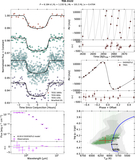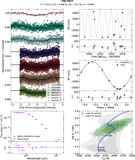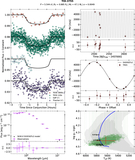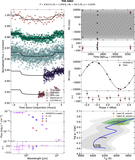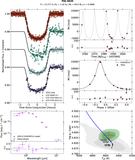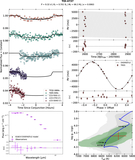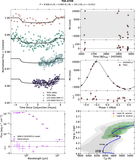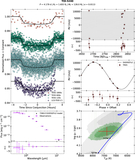Image Details
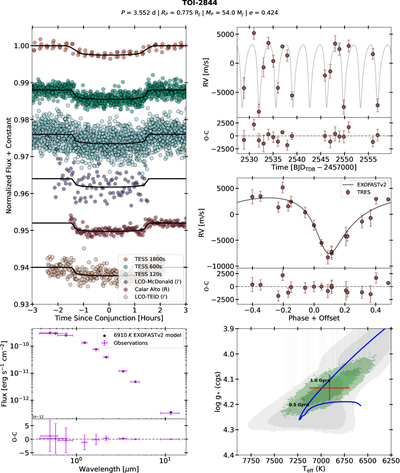
Caption: Figure 2.
TESS, follow-up, and archival observations of TOI-2844 compared to the the EXOFASTv2 results. Upper left: unbinned TESS and follow-up ground-based transits, phase-folded and shown in comparison to the best-fit EXOFASTv2 model with an arbitrary normalized flux offset. Multiple TESS sectors in the same cadence are stacked on top of each other. Bottom left: the SED of the target star compared to the best-fit EXOFASTv2 model. Residuals are shown on a linear scale, using the same units as the primary y-axis. Upper right: RV observations vs. time, including any significant long-term trend. The residuals are shown in the subpanel below in the same units. Middle right: RV observations phase-folded using the best-fit ephemeris from the EXOFASTv2 global fit. The phase is shifted so that the transit occurs at phase + offset = 0. The residuals are shown in the subpanel below in the same units. Bottom right: the evolutionary track and current evolutionary stage of the primary star according to the best-fit MIST model. The blue line indicates the best-fit MIST track, while the gray shaded contours show the 1σ and 2σ constraints on the star’s current Teff and ﹩\mathrm{log}g﹩ from the MIST isochrone alone. The green contours represent the 1σ and 2σ constraints on the star’s Teff and ﹩\mathrm{log}g﹩ from the EXOFASTv2 global fit, combining constraints from observations of the star and planet. The red cross indicates the median and 68% confidence interval.
Copyright and Terms & Conditions
© 2025. The Author(s). Published by the American Astronomical Society.



